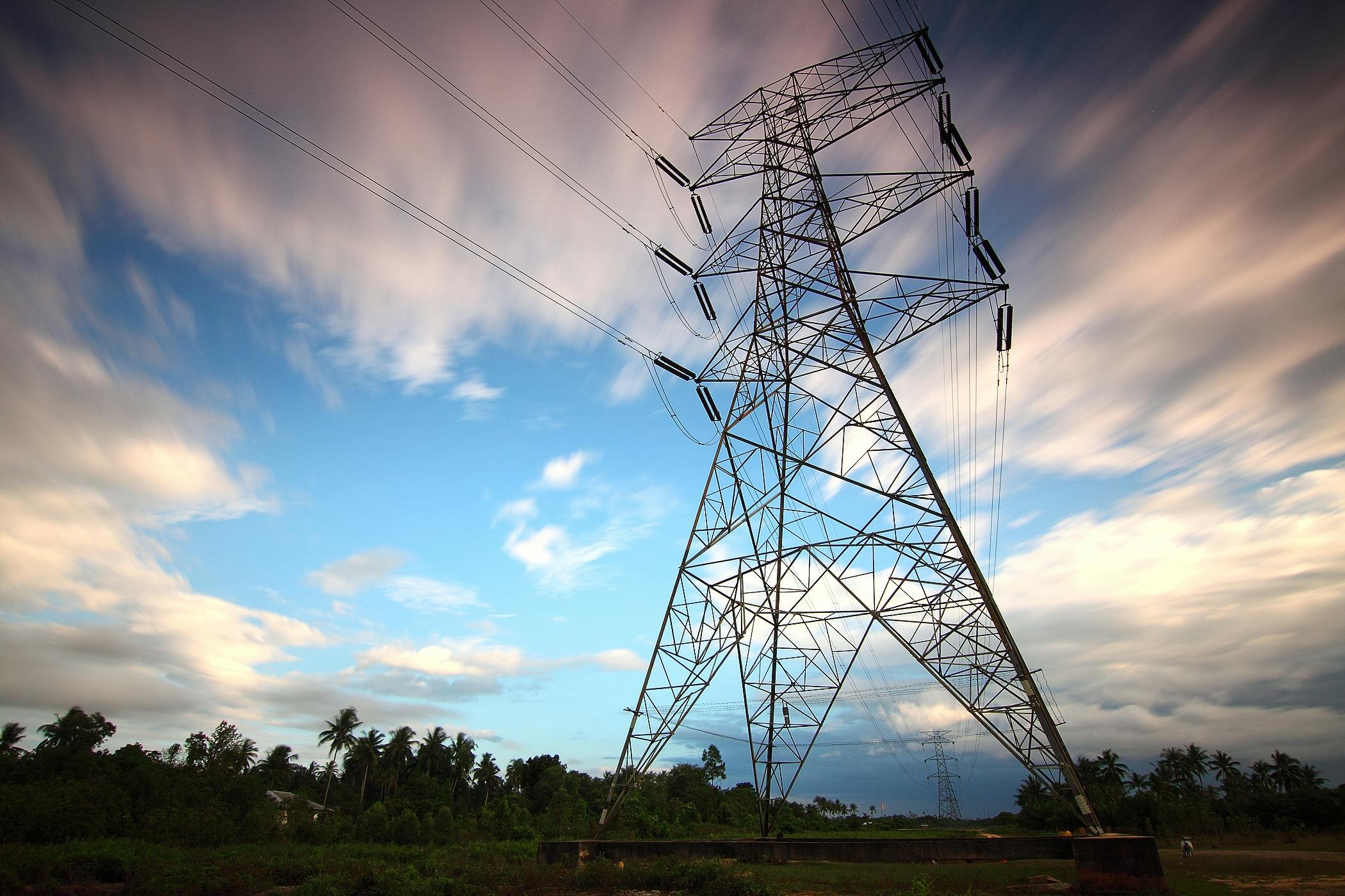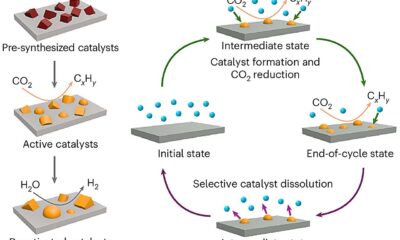Tech
Amid renewable-energy boom, study explores options for electricity market

Renewable energy sources like wind and solar generation now account for over 20% of electricity in the U.S., and keep growing after large-scale production has more than doubled since 2000.
Still, high-profile power failures illustrate persistent challenges from the lack of available capacity to provide enough energy at times of need, said Chiara Lo Prete, an associate professor of energy economics in the John and Willie Family Department of Energy and Mineral Engineering at Penn State.
The issue isn’t insufficient generation, but an unreliable ability to deliver ample power when customer use spikes, particularly where renewable resources and natural gas dominate power production, Lo Prete said. To better support the clean-energy transition, she and colleagues at a Washington, D.C.-based nonprofit recently studied 11 electricity market design proposals under consideration by grid operators. These designs put forward different approaches to guide energy generation and sources, as well as use across every sector of the energy market.
The proposals, yet to be tested in the market, range from a modest variation on current market designs to a complete overhaul. Researchers organized proposals into five categories from least to most dramatic, including concepts for long-term contract auctions and a two-pronged approach combining long- and short-term markets.
“Market structures should allow utility operators to recover both fixed and variable costs so they foster greater system reliability overall,” Lo Prete said.
Findings published in the journal Energy Economics spotlight key questions confronting utility decision makers and can shape more research into adjusting electricity markets. Lo Prete explained that forecasting overall demand—expected to see historic growth of 25% by 2030 and 78% by 2050—will be especially difficult as transportation electrifies and more data centers come online.
Mandatory “forward contracts,” or advance obligations by distributors to purchase specific amounts of electricity from power generators, could help support investments in resources that are instrumental in meeting decarbonization objectives, she said.
Lo Prete noted the February 2021 system failure in Texas that left more than 4.5 million homes without power; rolling outages in California in August 2020; and near-blackouts, also in the Golden State, in September 2022. In each instance, the underlying problem was a lack of accessible energy in the moment of greatest demand, she said.
Such situations have led grid operators to weigh the market approaches reviewed by researchers in their study, Lo Prete said. Reforms on the table would attempt to accommodate ongoing shifts in power generation, whether through longer-term auctioning of future electricity supplies, more centralized resource planning or other mechanisms like so-called “swing contracts.” They seek to ensure the availability of power production capabilities for dispatch in future operating periods.
“When the markets were restructured in the late 1990s, the energy system was very different from the one we have today,” Lo Prete said.
At that point, the system centered on thermal power plants driven by fossil fuels and nuclear energy. Utility markets today aren’t structured to integrate and sustain the renewable sources and large-scale electricity storage that have taken root since then.
Still, maintaining a range of power generation is vital, as older facilities like coal-powered plants contribute less to the power supply but remain important to consistent service, Lo Prete said. Last year, coal accounted for 8% of primary energy consumption nationally, down from 23% in 2000, according to a congressional report.
For their study, Lo Prete and her research partners at Resources for the Future (RFF) examined market proposals to assess energy affordability, efficiency, energy adequacy and other factors. Lo Prete, a faculty associate of the EMS Energy Institute and the Institute of Energy and the Environment and a Wilson Faculty Fellow at Penn State, completed a sabbatical at RFF ahead of the paper’s publication.
Among their conclusions, researchers found the organization of regulatory oversight makes it more difficult to incorporate clean-energy policy into electricity markets. Those “forward contracts” requiring specific electricity purchases could promote energy storage and power systems’ overall ability to fulfill customer needs, they found.
At the same time, the authors said it was tough to make recommendations or endorse one proposal over others, in part because the concepts were in different stages of development. Researchers cited specific concerns over inadequate investment incentives in current energy markets.
The authors also urged cooperation among energy-market researchers, encouraging them to make proposals accessible to broad audiences and facilitate input and feedback from those constituents. Communication will help researchers understand concerns and possible points of confusion, they said.
At Resources for the Future, contributing to the paper were Karen Palmer, senior fellow and director of the Electric Power Program, and associate fellow Molly Robertson.
More information:
Chiara Lo Prete et al, Time for a market upgrade? A review of wholesale electricity market designs for the future, Energy Economics (2025). DOI: 10.1016/j.eneco.2025.108640
Citation:
Amid renewable-energy boom, study explores options for electricity market (2025, October 29)
retrieved 29 October 2025
from https://techxplore.com/news/2025-10-renewable-energy-boom-explores-options.html
This document is subject to copyright. Apart from any fair dealing for the purpose of private study or research, no
part may be reproduced without the written permission. The content is provided for information purposes only.
Tech
Climate Change Made Hurricane Melissa 4 Times More Likely, Study Suggests

This story originally appeared on Inside Climate News and is part of the Climate Desk collaboration.
Fueled by unusually warm waters, Hurricane Melissa this week turned into one of the strongest Atlantic storms ever recorded. Now a new rapid attribution study suggests human-induced climate change made the deadly tropical cyclone four times more likely.
Hurricane Melissa collided with Jamaica on Tuesday, wreaking havoc across the island before tearing through nearby Haiti and Cuba. The storm, which reached Category 5, reserved for the hurricanes with the most powerful winds, has killed at least 40 people across the Caribbean so far. Now weakened to a Category 2, it continues its path toward Bermuda, where landfall is likely on Thursday night, according to the National Hurricane Center.
Early reports of the damage are cataclysmic, particularly in hardest-hit western Jamaica. Winds reaching speeds of 185 miles per hour and torrential rain flattened entire neighborhoods, decimated large swaths of agricultural lands and forced more than 25,000 people—locals and tourists alike—to seek cover in shelters or hotel ballrooms. According to the new attribution study from Imperial College London, climate change ramped up Melissa’s wind speeds by 7 percent, which increased damages by 12 percent.
Losses could add up to tens of billions of dollars, experts say.
The findings echo similar reports released earlier this week on how global warming contributed to the likelihood and severity of Hurricane Melissa. Each of the analyses add to a growing body of research showing how ocean warming from climate change is fueling the conditions necessary for stronger tropical storms.
Hurricane Melissa is “kind of a textbook example of what we expect in terms of how hurricanes respond to a warming climate,” said Brian Soden, a professor of atmospheric sciences at the University of Miami, who was not involved in the recent analyses. “We know that the warming ocean temperatures [are] being driven almost exclusively by increasing greenhouse gases.”
The storm has disrupted every aspect of life in this part of the Caribbean.
“There’s been massive dislocation of services. We have people living in shelters across the country,” Dennis Zulu, United Nations resident coordinator in Jamaica, said in a press conference on Wednesday. “What we are seeing in preliminary assessments is a country that’s been devastated to levels never seen before.”
The Climate Connection
For the rapid attribution study, researchers at Imperial College used the peer-reviewed Imperial College Storm Model, known as IRIS, which has created a database of millions of synthetic tropical cyclone tracks that can help fill in gaps on how storms operate in the real world.
The model essentially runs simulations on the likelihood of a given storm’s wind speed—often the most damaging factor—in a pre-industrial climate versus the current climate. Applying IRIS to Hurricane Melissa is how the researchers determined that human-induced warming supercharged the cyclone’s wind speed by 7 percent.
Tech
We Had Interior Designers Blind Judge 10 Popular Artificial Christmas Trees

Tech
Gear News of the Week: Withings Launches Its Pee Scanner, and Samsung Shows Off a Trifold Phone

A few weeks ago, bathroom and plumbing company Kohler debuted the Dekoda, a health and wellness sensor that lives on your toilet bowl and records signs of your gut health and hydration. Now, Withings has launched the U-Scan. First shown at CES in 2023, the U-Scan also sits inside the toilet bowl. A thermal sensor detects when a fresh, er, sample is being deposited. The U-Scan takes a small sample and analyzes it on-site with miniature biochemical sensors inside an interchangeable cartridge.
There are two separate U-Scans. U-Scan Nutrio analyzes your diet, checking for biomarkers like bio-acidity, hydration status, and ketone levels, which shows that you’ve started burning body fat instead of sugar. U-Scan Calci also checks for calcium, which is a sign that you might have kidney stones. Results are then transmitted via Wi-Fi to the Withings app.
The cartridges are replaceable, and the sensor comes with a docking station to clean and recharge the sensor. Purchasing the U-Scan comes with a complimentary subscription to Withings+, the company’s upgraded app, which also includes a free consultation with a nutritionist.
The U-Scan packages start at $380, which comes with one U-Scan, either Nutrio or Calci, one cartridge, and two to four scans weekly (each cartridge lasts about 2.5 months). For more intensive monitoring, the Intensive package includes two cartridges for five to seven weekly measurements. Replacement cartridges are $100 for one cartridge or $180 for two, and Withings sends you the cartridge automatically depending on which package you select. The U-Scan is now available at Withings.com. We’ll be testing it soon. —Adrienne So
Samsung Brings Its Browser to Windows, and Teases a Trifold Phone
Samsung has long offered its own browser on its smartphones—Samsung Internet—but now the app is finally available on another platform: Windows. Considering Samsung makes Windows laptops and Android phones, this move allows folks who use the company’s browser to share their browsing history and bookmarks between phone and laptop, and if you have saved passwords with Samsung Pass, you can use it to autofill passwords on websites.
The company is taking this opportunity to bring some Galaxy AI features over as well, including Browsing Assist, which lets you instantly summarize webpages or translate them to another language. Samsung says its browser also blocks third-party web trackers, and there’s a Privacy Dashboard that lets you see what has been blocked.
Samsung Internet for PC is only available as a beta right now, but anyone in the US or South Korea on Windows 11 or Windows 10 (version 1809 and above) can download it now.
-

 Politics1 week ago
Politics1 week agoTrump slams ‘dirty’ Canada despite withdrawal of Reagan ad
-

 Tech1 week ago
Tech1 week agoDefect passivation strategy sets new performance benchmark for Sb₂S₃ solar cells
-

 Business1 week ago
Business1 week agoJLR shutdown after cyber hack drives slump in UK car production
-

 Tech1 week ago
Tech1 week agoTurning pollution into clean fuel with stable methane production from carbon dioxide
-

 Sports1 week ago
Sports1 week agoAlleged mob ties in NBA scandal recall La Cosa Nostra’s long shadow over sports
-

 Tech1 week ago
Tech1 week agoI Have Hearing Loss. These Are the Hearing Aids I Recommend
-

 Tech1 week ago
Tech1 week agoThe ‘Surge’ of Troops May Not Come to San Francisco, but the City Is Ready Anyway
-

 Tech1 week ago
Tech1 week agoA flexible lens controlled by light-activated artificial muscles promises to let soft machines see


















